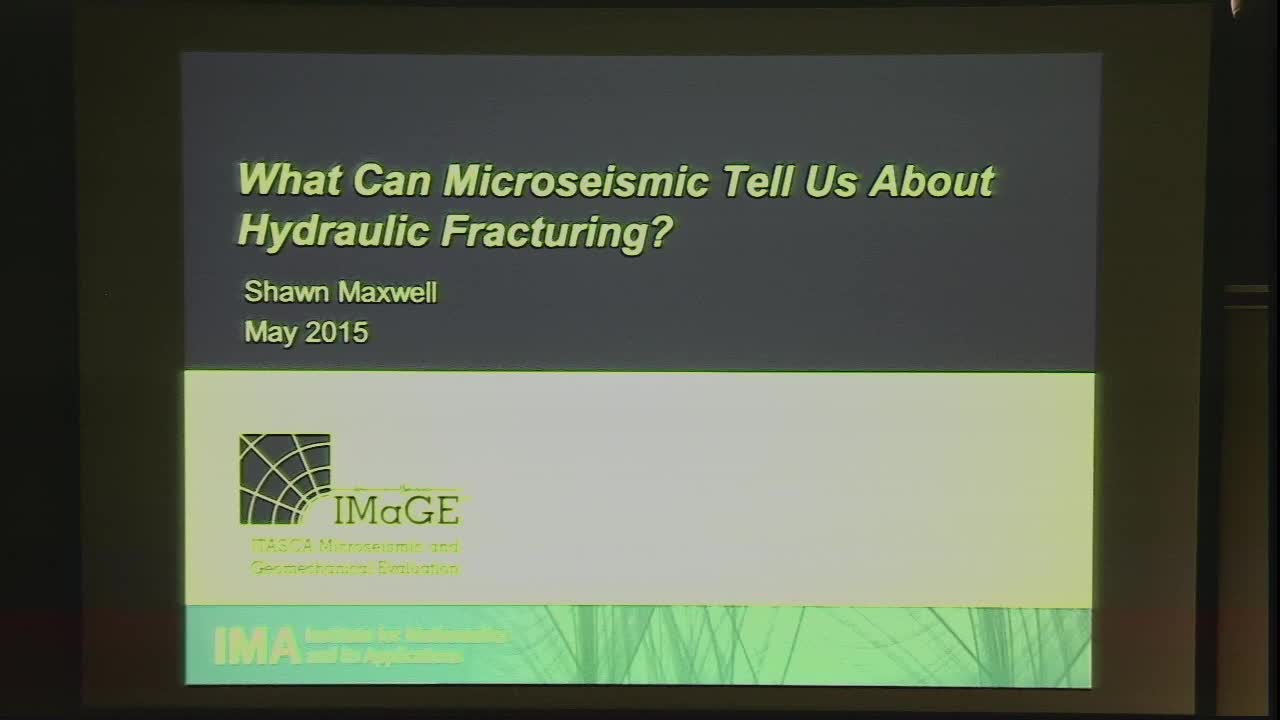What Can Microseismicity Tell Us About Hydraulic Fracturing?
Presenter
May 11, 2015
Keywords:
- Industry
MSC:
- 62P30
Abstract
Microseismic imaging is an important technology for tracking fracture creation and reactivation of pre-existing fractures occurring during various industrial operations, particularly hydraulic fracture treatments of unconventional reservoirs. Often microseismic locations are used to interpret the fracture geometry, although additional insights into the fracture deformations can also be extracted through source characterization. The resulting source deformation investigations provide additional information about the fracturing and are sometimes interpreted as representing the entire spectra of deformations.
In certain cases the observed microseismicity is found to correspond to shear deformation, although the hydraulic fracturing is generally considered a tensile fracturing process. The timeframe of observed microseismic shear deformations are also tied to the relative high frequency content of the seismic recording equipment and much more rapid than the relative slow and hence aseismic tensile fracture dilation occurring throughout the injection period. Fracture movements can also potentially occur at some distance away from the hydraulic fracture (sometimes referred to as ‘dry’ microseismicity) associated with pressure and/or pressure changes resulting from the fracturing. Although the fracture geometry can often be inferred directly from the microseismicity, attempts to understand the fracture deformation from the microseismic deformation can be a challenge.
Geomechanical simulations of injections within a discrete fracture network (DFN) can model both the aseismic and microseismic modes of deformation and provide a consistent interpretation of the observed injection pressures, rates, volumes along with the microseismic observations. Thus microseismic geomechanical predictions offer a means to enhance the conventional interpretation of the geometry of the stimulated fracture network, to examine fracture effectiveness through understanding of the complete fracture network deformation and propped characteristics. However, the geomechanical models are typically extremely sensitive to input parameters including stress anisotropy, completion effectiveness to fracture initiation and the DFN characteristics. Matching the observed microseismic with relevant portions of the geomechanical deformation, can increase the confidence in the geomechanical model and provide a crucial framework to interpret the microseismicity as the geomechanical response of the reservoir.
